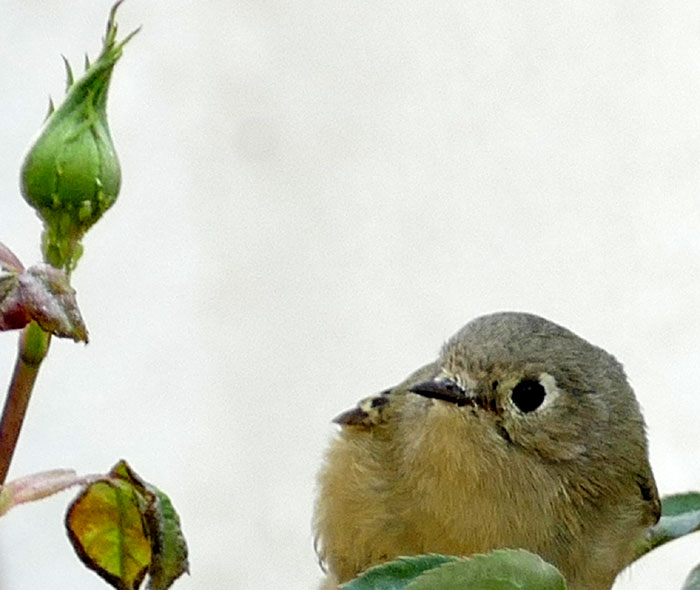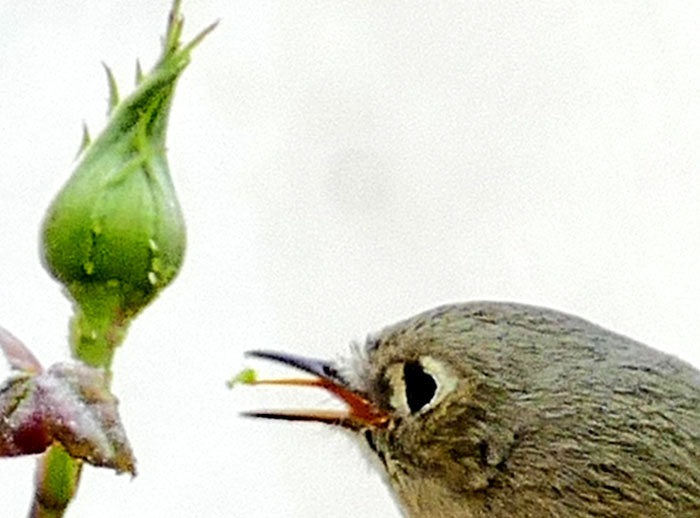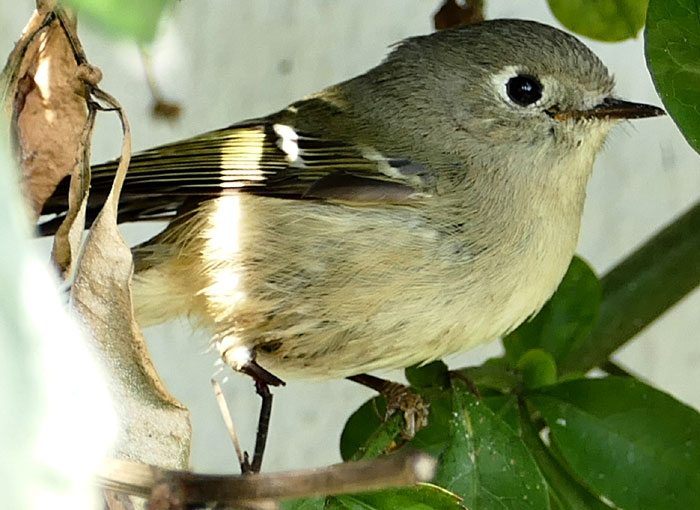Excerpts from Jim Conrad's
Naturalist Newsletter
entry dated December 28, 2022, issued from near Tequisquiapan, elevation about 1,900m (6200 ft), N20.565°, W99.890°, Querétaro state, MÉXICO
RUBY-CROWNED KINGLET EATS APHID
(pictures courtesy of Richard Newland)

In a backyard on the edge of a little village near Tequisquiapan, my friend Richard was taking pictures of the above Ruby-crowned Kinglet, when it became apparent that the bird was eyeing some aphids on a rosebud. Suddenly the bird darted toward the rosebud, keeping its eyes fixed on the biggest aphid, visible at the rosebud's bottom, right:

A quick peck and retreat, and the biggest aphid, no longer on the rosebud, could be seen stuck to the tip of kinglet's tongue:

Richard photographed the foraging kinglet for two or three days, the bird always flitting nervously from one place to another. Only when his photos were on the computer screen did he realize that this bird had part of a leg nearly completely severed:

Richard was amazed that with such a leg the bird seemed to be getting along very well. Sometimes the kinglet appeared to be trying to shake off the leg's dangling part.
Apparently the bird remained in Richard's backyard only for three or four days, a period coinciding with the arrival of a strong norte, or cold front, dipping all the way down from North America to here, and eventually reaching as far south as Honduras. It was the same cold front that brought the historic cold and snow to North America during the Christmas holidays of 2022. As soon as the weather here began warming and the sun shine, the bird disappeared, though it's unclear if there was any correlation between the bird's presence and the weather.
Ruby-crowned Kinglets nest mostly in Canada and Alaska, and higher elevations in the western US. At lower elevations in the southern US and Mexico, the species occurs only during the winter. In Mexico it winters south to Oaxaca. In their northern nesting area, Ruby-crowned Kinglets breed in tall, dense conifer forests of such species as spruce, fir and tamarack, but in their winter homes they're found mostly in shrubby environments, deciduous forests, parks and suburbs.
It's easy to see how our bird would feel comfortable in Richard's back yard with its ornamental plantings. However, mountains with trees atop them rise all around, so maybe our bird stays mostly there, descending to our scrublands when the weather gets a little wintry.
However, who knows what's on such a bird's mind when you see them?